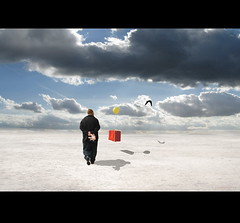Aside from the interesting cultural, social, and political discussions provoked by The Lego Movie, there’s also the equally interesting discussion of the toy itself. Some reviewers have observed a disparity between the film’s celebration of improvisation and the typical design and marketing of contemporary Lego toys (including toys based on the movie). Legos are now mainly sold in sets with a pre-defined final form, often featuring highly specific pieces that resist being used in anything other than a Ninjago dragon. If you don’t believe that this practice really affects the way families think of and play with Legos, witness Pley, a company that rents Lego sets, to be dismantled and returned after the set is completed, virtually guaranteeing that children will never even get the chance to do anything slightly different with their Legos.
 So I’m on board with this critique, but I’m not sure we’ve really put our fingers on what should be preserved and celebrated about Legos. I’ve seen a number of variations on the phrase “free play of the imagination” kicked around. I don’t think this says what we want it to say. If the goal is to teach children to play freely, using their imaginations, why give them Legos? Why give them toys at all? Hadn’t you better blindfold them and put them in a quiet room? (Or maybe read them Kant’s Critique of Judgment?)
So I’m on board with this critique, but I’m not sure we’ve really put our fingers on what should be preserved and celebrated about Legos. I’ve seen a number of variations on the phrase “free play of the imagination” kicked around. I don’t think this says what we want it to say. If the goal is to teach children to play freely, using their imaginations, why give them Legos? Why give them toys at all? Hadn’t you better blindfold them and put them in a quiet room? (Or maybe read them Kant’s Critique of Judgment?)
Even Philip Kenicott, the ultimate classic Lego curmudgeon, who thinks Legos were defiled by the introduction of figures, grants that “The interlocking pieces [of the original Lego set] abided by certain rules of geometry, which were immutable.” He rather downplays this limitation, but I would add that even before you bring geometry into it, the idea of interlocking pieces already imposes a limitation on play. It says: play at building something, or at least something like building.
Of course, children do things with Legos besides build (like laying them side by side and calling them cookies, or headstones). But that’s just because children are naturally subversive and enjoy deciding for themselves what something is for. Which is exactly what Daniel Bosch seems to be after in his peculiar dialog, “Imaginatio Lego Sum,” in which a parent goes from a principled ban on overly prescriptive toys to an ironic endorsement of them: “I want Umbilicus’s imagination to be so powerful it can transform even the most commercial images, even when they come from Lego.”

This photo makes sense here, right? The, uh, the sumo wrestler is a metaphor for commercialized forms of play, maybe?
But an overwhelming imagination is not a value. Rather, the impositions made by toys on imagination are just what they are good for (or at least part of it). I suppose Bosch thinks of toys as structured challenges to a child’s authenticity, used by the parent to build an increasing immunity to any outside imposition on the perfect expression and development of the child’s own self-born narrative. But my goodness, what for? Being part of a grander story is part of the story everyone wants for themselves, and I dare you to say otherwise.
I submit that we want for children’s imaginations could be called “freedom” or “play” but not both at once. Let’s think of “play” in the sense of “wiggle room.” A little space of freedom between the real and the fantastical. Fantasy only has worth if it both learns from and instructs reality, developing the tissue of traditions which make it up. Lego play is founded on the human practice of building by putting pieces together into the angular forms, so a child isn’t “playing Legos” if she picks two of them up and calls one “Ruby” and the other “Max,” even though this would be a freer use of the toy. On the other hand, the child isn’t “playing Legos” if she’s only “Pley”ing them, without a chance to direct her own building.
When you give a child a toy or a story, you are always inviting them into a pre-existing narrative. But if it’s a good toy or a good story, there’s a little play built in.
Image credits:
“Easy Going” by flickr user h. koppdelaney, used under CC BY-ND 2.0
“Sumo Fun” by DOD EMP Eric Armstrong, used under CC BY 2.0